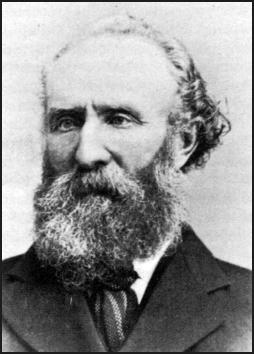Charles Thomas Campbell facts for kids
Quick facts for kids
Charles Thomas Campbell
|
|
|---|---|
 |
|
| Born | August 10, 1823 St. Thomas Township, Franklin County, Pennsylvania |
| Died | April 15, 1895 (aged 71) Scotland, South Dakota |
| Place of burial |
Yankton City Cemetery, Yankton, South Dakota
|
| Allegiance | United States of America Union |
| Service/ |
United States Army Union Army |
| Years of service | 1846–1848, 1861–1866 |
| Rank | |
| Commands held | 57th Pennsylvania Infantry |
| Battles/wars | Mexican–American War American Civil War |
Charles Thomas Campbell (born August 10, 1823 – died April 15, 1895) was an important American soldier. He also worked as a lawmaker, a businessman, and a town mayor. During the American Civil War, he became a general for the Union Army. He was hurt badly many times during the war.
Early Life and Career
Charles Campbell was born on August 10, 1823. His hometown was St. Thomas Township in Franklin County, Pennsylvania. He went to college at Marshall College, which is now called Franklin & Marshall College. It is located in Lancaster.
In 1846, Campbell joined the United States Army. He served during the Mexican–American War. He started as a second lieutenant in the 8th U.S. Infantry. He was promoted to first lieutenant in February 1847. Then, in April, he joined the 11th U.S. Infantry. By August 1847, he became a captain. He left the army honorably in August 1848. A few years later, in 1852, Campbell was elected to the Pennsylvania General Assembly. This is where laws are made for the state.
Service in the Civil War
When the American Civil War began in 1861, Charles Campbell supported the Union. He volunteered for service in Pennsylvania's state forces. On May 29, he became a captain in the Pennsylvania Light Artillery. He was promoted to lieutenant colonel in August. By September 13, he was a colonel.
On December 20, Campbell fought in the Battle of Dranesville. This battle took place in Fairfax County, Virginia. He left the state forces on February 1, 1862.
In 1862, Campbell joined the Union Army. He was put in charge of the 57th Pennsylvania Infantry as its colonel. He led the 57th Infantry during the Peninsula Campaign. This campaign happened in 1862. His unit was part of a division led by Brig. Gen. Philip Kearny.
Campbell and his troops fought in the Battle of Seven Pines on May 31. During this battle, his horse was shot. He was also badly wounded three times. He was hit in his right arm, pelvis, and left leg. Confederate soldiers captured him. But even with his injuries, Campbell managed to escape later that day.
With his right arm still healing, Campbell led the 57th again. This was during the Fredericksburg Campaign in the winter of 1862. At the Battle of Fredericksburg on December 13, he was seriously wounded once more. He was hit in his stomach and the same right arm. The stomach wound was very severe. Doctors thought he would not survive.
On November 29, 1862, Campbell was appointed a brigadier general. However, this appointment was not officially confirmed. It expired on March 4, 1863.
After partly recovering, Campbell was promoted to brigadier general on March 13, 1863. On November 7, 1864, he was given command of the Union District of Wisconsin. This was part of the Department of the Northwest. He led this district until the war ended. He left the volunteer service on January 15, 1866.
Life After the War
After the Civil War, Charles Campbell moved to the Dakota Territory. He worked as an inspector for Native American agencies. Then he operated a stage line, which carried people and goods. He also ran a hotel.
In 1870, Campbell started a stagecoach stop. This stop was along the Firesteel Trail. It included his home, an inn, a general store, and a large horse barn. This stop grew into the town of Scotland. Campbell became active in politics there. He served as the mayor of the town he helped create.
Campbell died in Scotland, South Dakota, when he was 71 years old. He passed away six days after falling from the steps of his hotel. This happened on April 9, 1895. He was buried in Yankton City Cemetery in Yankton, South Dakota.


